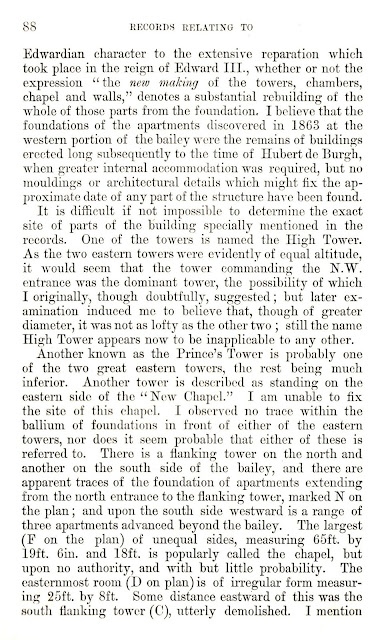Essex Archaeological News
Summer 1973
(later called the Essex
Society for Archaeology and History)
Extracts from Newsletter No 43
THE SEAL FOUND AT
RADWINTER.
Under this heading the Rev. G.A.
Benton contributed to our Transactions, vol. XV, p. 158 (1921), a short note
about the digging up in 1917 of a brass or latten seal (matrix) in the garden
of Radwinter rectory, bearing the device :-
+ DIEU ET MON DROIT +
Sir William St. John Hope gave
the opinion that it was an official seal of the seventeenth century, adding, 'But
who could want to use the device of the Order of the Garter in your
neighbourhood I do not know; it would be difficult to assign the seal to any
person.'
Rarely did a problem of this
sort remain unsolved by our scholarly former Editor; yet, having been a curate
at Saffron Walden before going to Fingringhoe, it is surprising that he did not
think of William Harrison the Vicar of Radwinter, who was appointed a canon of
St. George's Chapel, Windsor, in 1586, and wrote the now famous Description of
England (1577), which incidentally contains a long section on the Order of the
Garter.
There is a further link with
the Order, whose Chancellor, Sir Thomas Smith, Secretary of State, who built
Hill Hall, Theydon Mount, borrowed long passages from Harrison for his De Republica
Anglorum.
If Harrison did not borrow the
matrix, is it conceivable that Smith, visiting Radwinter vicarage, dropped it
there?
F.G.Emmison.
ALDERSBROOK MANOR,
COMMENT.
Following the mention of the
Essex Review in the report on the digging at Aldersbrook mentioned in the last
newsletter, we have received a comment from Mr C.H.I. Chown, a Life member of
the Society, who was responsible for the original Essex Review article. This we
reproduce below:
The finding of the pottery and
the wine bottle embossed 'Abraham Frosts 1701', in the recent excavations on
the site of Aldersbrook House is naturally the subject of speculation by those
interested in the history of this area.
In the early eighteenth
century Aldersbrook was the home of Smart Lethieullier, the antiqury, who was
born at the Manor House 3 November 1701 and baptised at Little Ilford Church
eight days later. In a letter written from Aldersbrook in August 1750 to his
friend Charles Lyttleton, afterwards president of the Society of Antiquaries,
Lethieullier wrote
'No great weight ought I think
to be laid upon the circumstance of the place where any antiquity is found,
except concurrent circumstances agree ..... It is very possible a [foreigner] may drop a sael or a coin in my gardens, which by a parity of reasoning
induce those who may find it one hundred years hence, to conclude that a [foreigner] was at this time owner of Aldersbrook.'
In view of these near
prophetic words, any rash thoughts that the empty wine bottle was possibly part
of the family celebrations for Lethieullier's christening should be treated
with caution!
Incidentally, the article on
Aldersbrook Farm in the Essex Review of 1941, referred to in your report, did
not question either of the survey maps of 1723 or 1748, but corrected Lyson's
assumption that the Manor House and the Farm House were constructed on the same
site
It would be interesting if the
West Essex Archaeological Group were able to locate the precise site of Naked
Hall Hawe, believed to be the predecessor of Aldersbrook House. The latter was
built early in the sixteenth century, but there are references to Naked Hall
Hawe two hundred years before this time. Lethieullier's writings mention that,
as a boy, he remembered the ruins of foundations of a large building, three
hundred yards due South from the Heronry Pond in Wanstead Park. This may well
have been the site of Naked Hall. The foundations were destroyed when Sir
Richard Child was planting trees round the boundary of his estate in 1715. The
level of the ground in the vicinity is said at the time to have been
considerably raised.
Editorial note.
Aldersbrook Manor, Comment.
Instruction in archaeological
discipline from 1750 is somewhat surprising, and more so because the point made
is so perfectly valid. Of course in the present case it is unlikely that the
1701 bottle will be anything more useful than a post quem.
The juxtaposition of this
article to that of Dr F.G. Emmison's on the seal at Radwinter, was initially
coincidental, but the temptation to leave the articles together was
irresistible.
























































